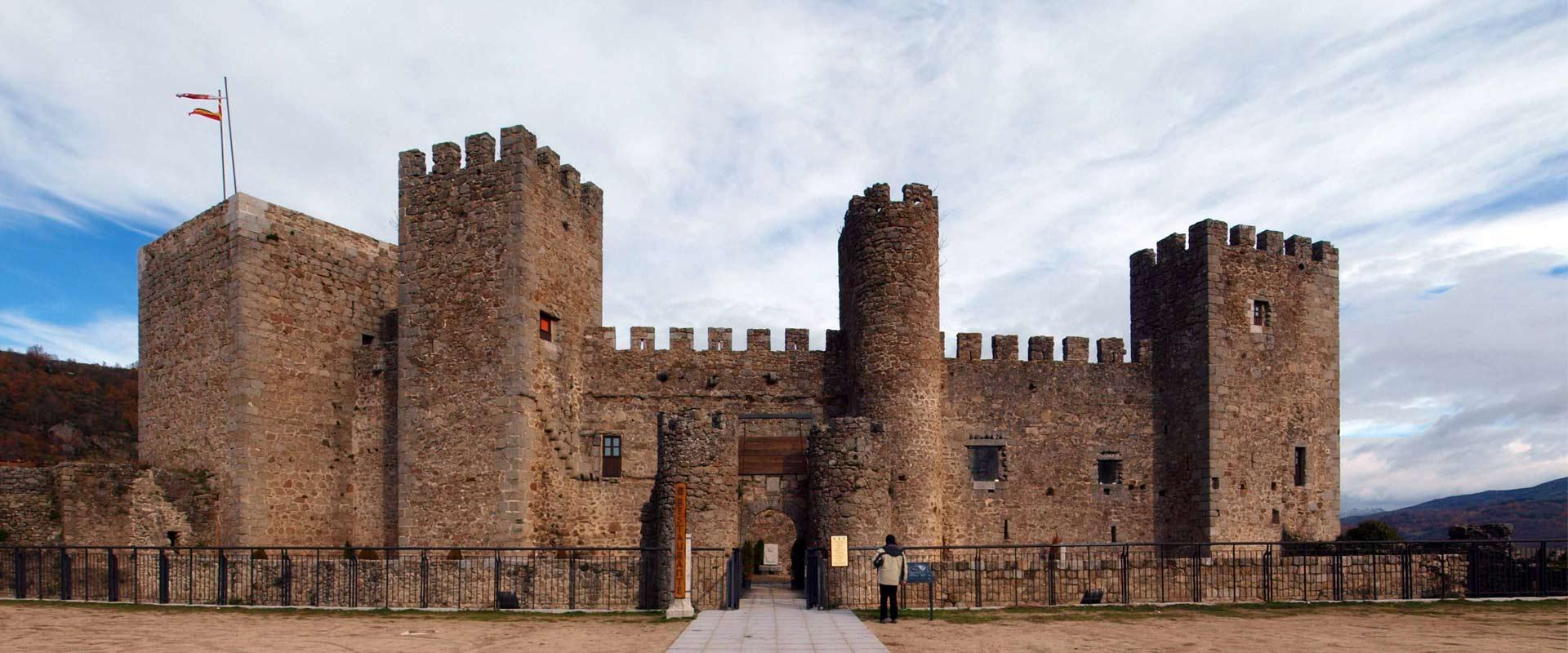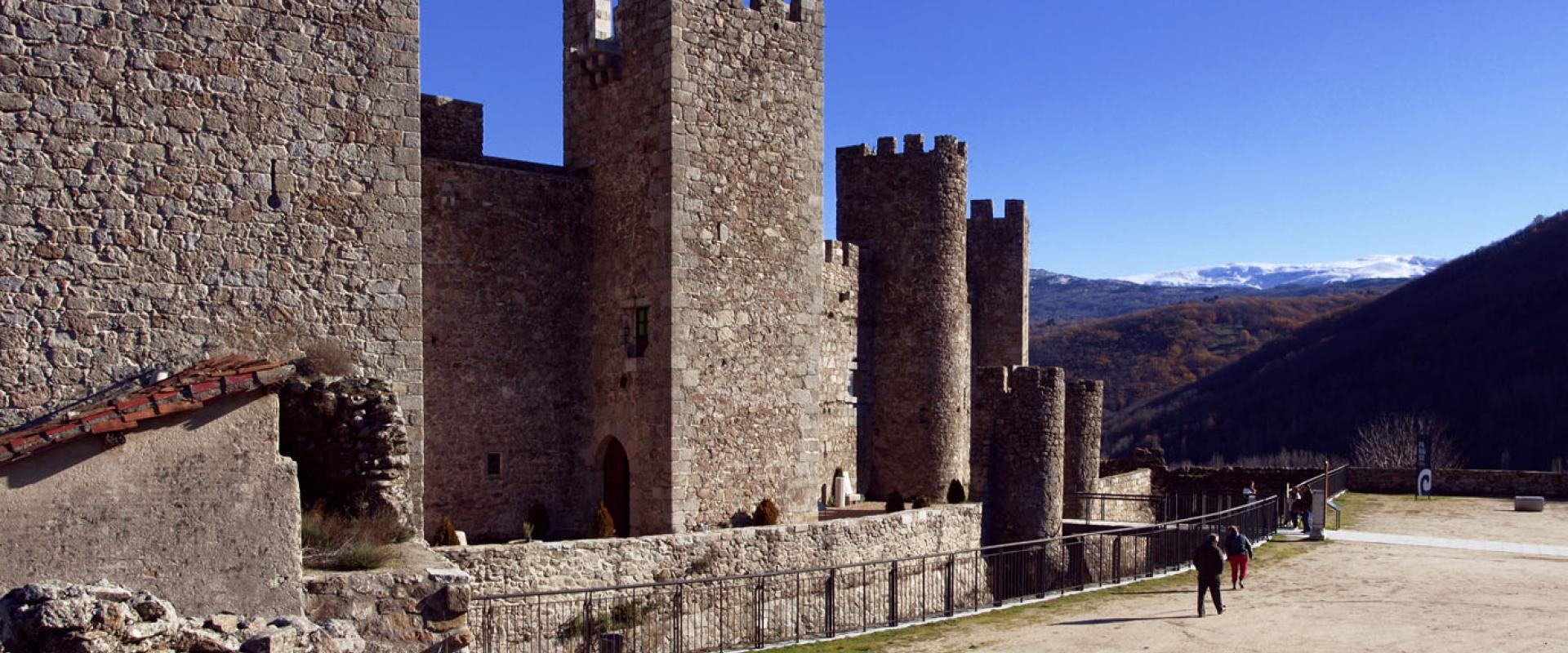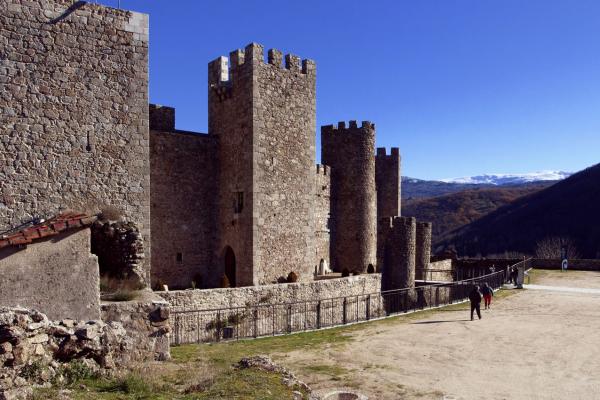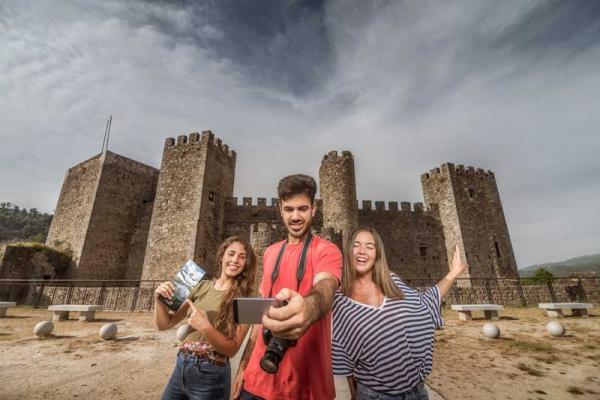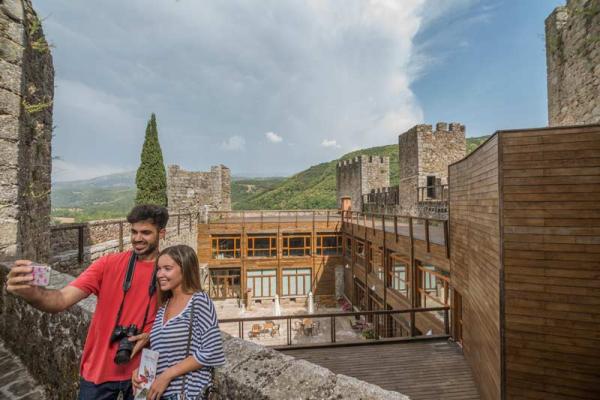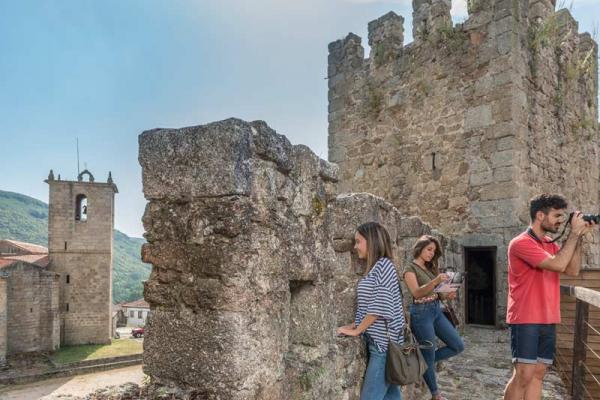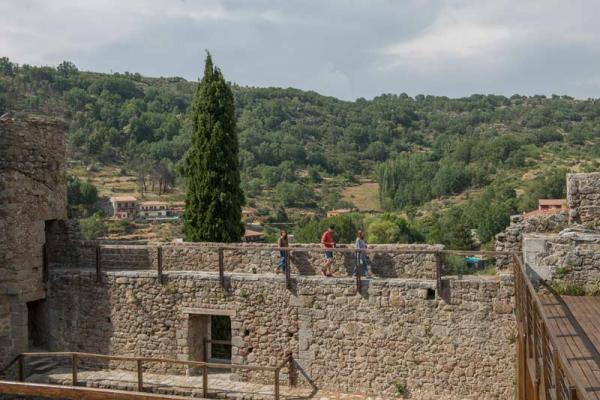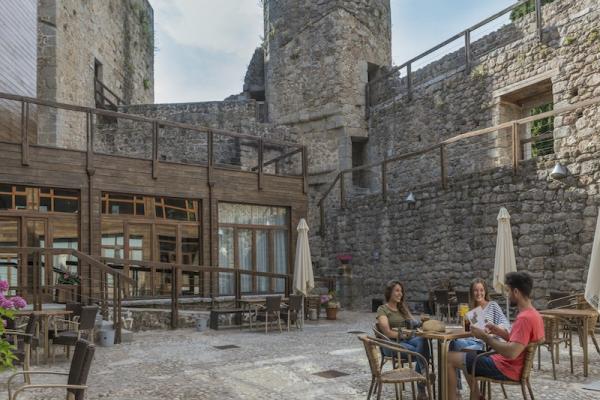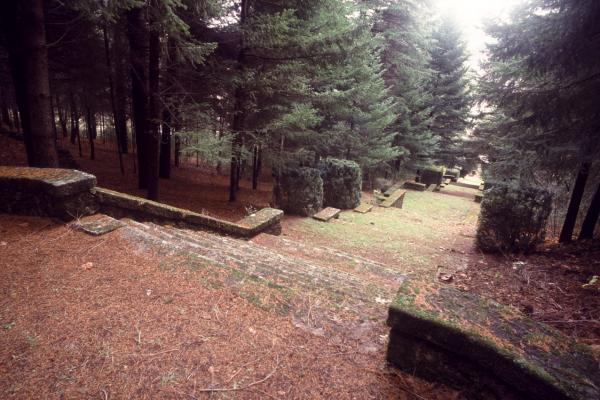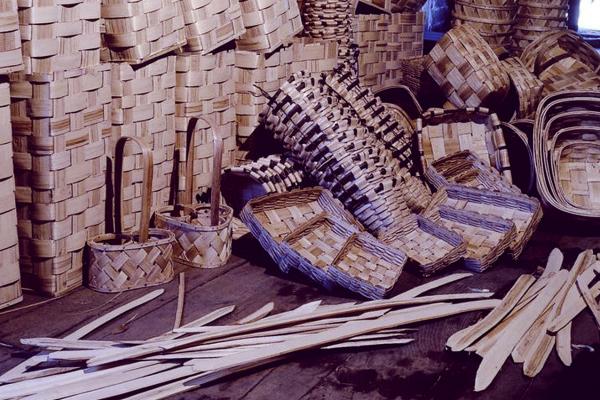Montemayor del Río Castle
Known as San Vicente Fortress, the origin of the castle dates back to the XIII century. However, the current site was finished two centuries later. Some transformations which took place later on changed its military appearance into a palace one, becoming in this way one of the most beautiful fortresses in Salamanca.
It used to have a defensive function between the north plain and Extremadura and it was the witness of interchanges of people and goods, the witness of the crossing point of the Mesta transhumant flock of sheep and the witness of pilgrims on their way to Santiago. High walls and cylindrical and square towers give the castle a slender and powerful appearance at the same time.
After a restoration and consolidation process, nowadays it houses the Middle Ages Interpretation Centre. The visitor can walk around the castle, visiting the moat, barbican, tower keep, patrol path, and discover the way of life of that time.
The visitor will be able to discover different aspects related to the fortifications and the medieval building techniques, the repopulation of the South of the province of Salamanca, the development of the castle and the life outside this fortification. They can learn about the lords and vassals, their daily life, the hunting and war guns or the roles and clothing of the medieval men and women.
